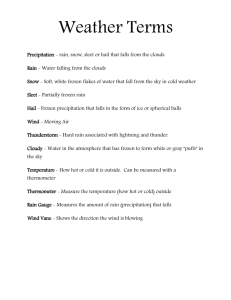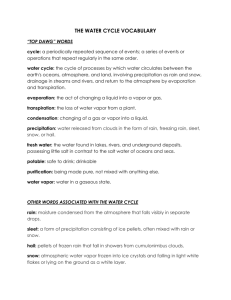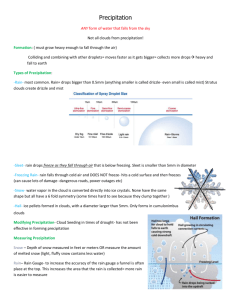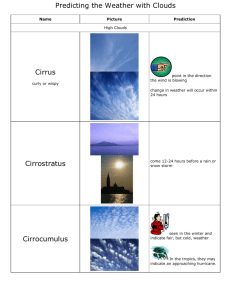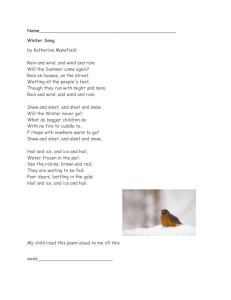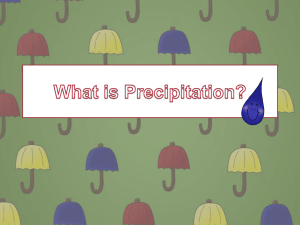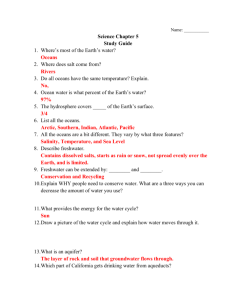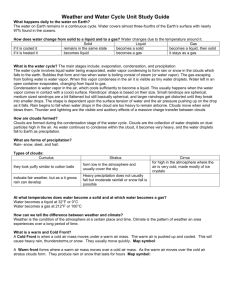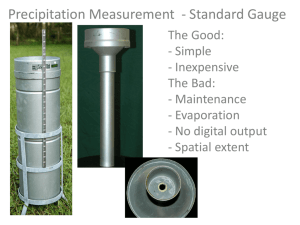Types of Precipitation: Hail, Sleet, Snow, Rain
advertisement
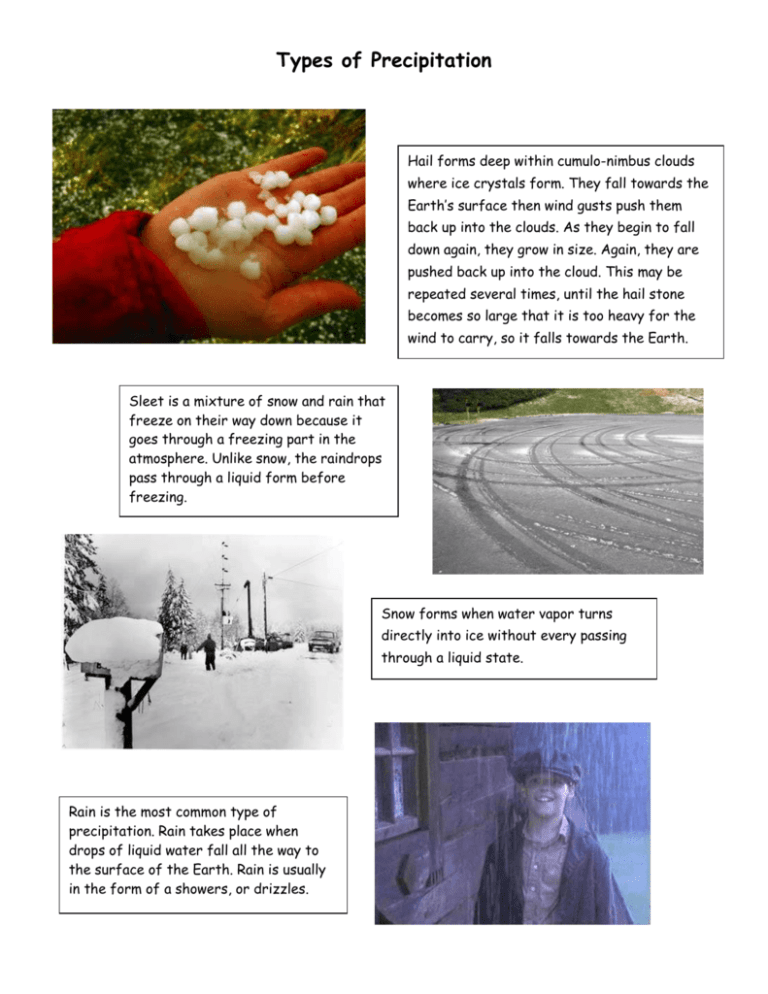
Types of Precipitation Hail forms deep within cumulo-nimbus clouds where ice crystals form. They fall towards the Earth’s surface then wind gusts push them back up into the clouds. As they begin to fall down again, they grow in size. Again, they are pushed back up into the cloud. This may be repeated several times, until the hail stone becomes so large that it is too heavy for the wind to carry, so it falls towards the Earth. Sleet is a mixture of snow and rain that freeze on their way down because it goes through a freezing part in the atmosphere. Unlike snow, the raindrops pass through a liquid form before freezing. Snow forms when water vapor turns directly into ice without every passing through a liquid state. Rain is the most common type of precipitation. Rain takes place when drops of liquid water fall all the way to the surface of the Earth. Rain is usually in the form of a showers, or drizzles. Types of Precipitation Hail forms deep within cumulo-nimbus clouds where ice crystals form. They fall towards the Earth’s surface then wind gusts push them back up into the clouds. As they begin to fall down again, they grow in size. Again, they are pushed back up into the cloud. This may be repeated several times, until the hail stone becomes so large that it is too heavy for the wind to carry, so it falls towards the Earth. Sleet is a mixture of snow and rain that freeze on their way down because it goes through a freezing part in the atmosphere. Unlike snow, the raindrops pass through a liquid form before freezing. Snow forms when water vapor turns directly into ice without every passing through a liquid state. Rain is the most common type of precipitation. Rain takes place when drops of liquid water fall all the way to the surface of the Earth. Rain is usually in the form of a showers, or drizzles.

